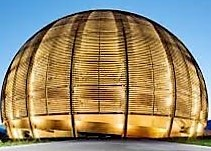Speaker
Description
Bardeen–Cooper–Schrieffer theory explains how the heat capacity of the superfluid vanishes when the temperature approaches zero. Various mechanisms may suppress the pairing gap in the superfluid, leading to an increased heat capacity. In turn, this may translate to changing the cooling rate and the thermal evolution of neutron stars. The presence of a vortex in a superfluid neutron matter will add extra degrees of freedom in which the energy is stored, hence contributing to the heat capacity.
From fully microscopic simulations, employing Superfluid Local Density Approximation (SLDA), it is possible to calculate the finite-temperature energy of the system. We use Brussels-Montreal type energy density functional, a very accurate nuclear functional designed to agree with existing astrophysical constraints. Using this state-of-the-art functional, we estimate the change in the heat capacity that results from the mere existence of a vortex in the system.
